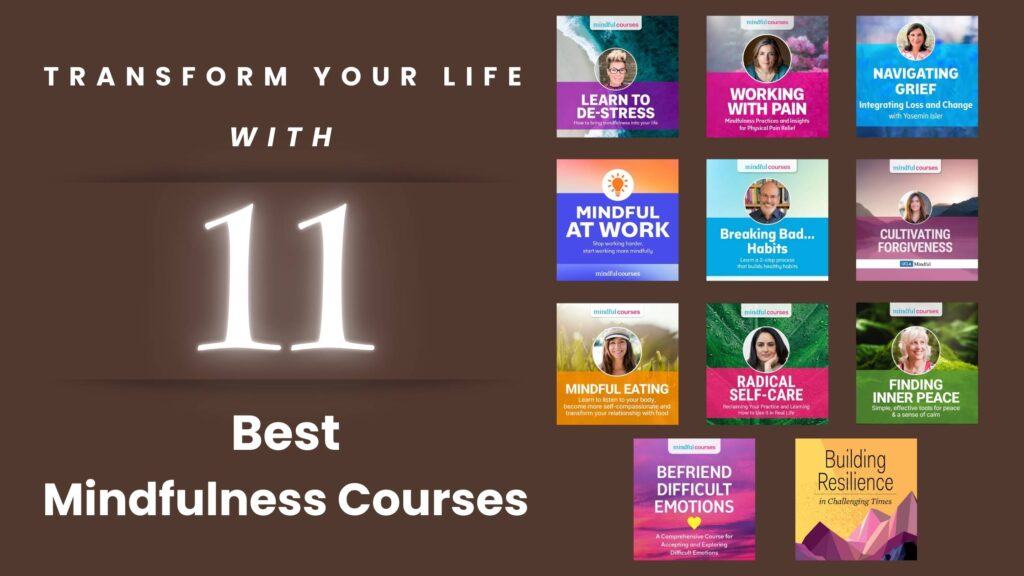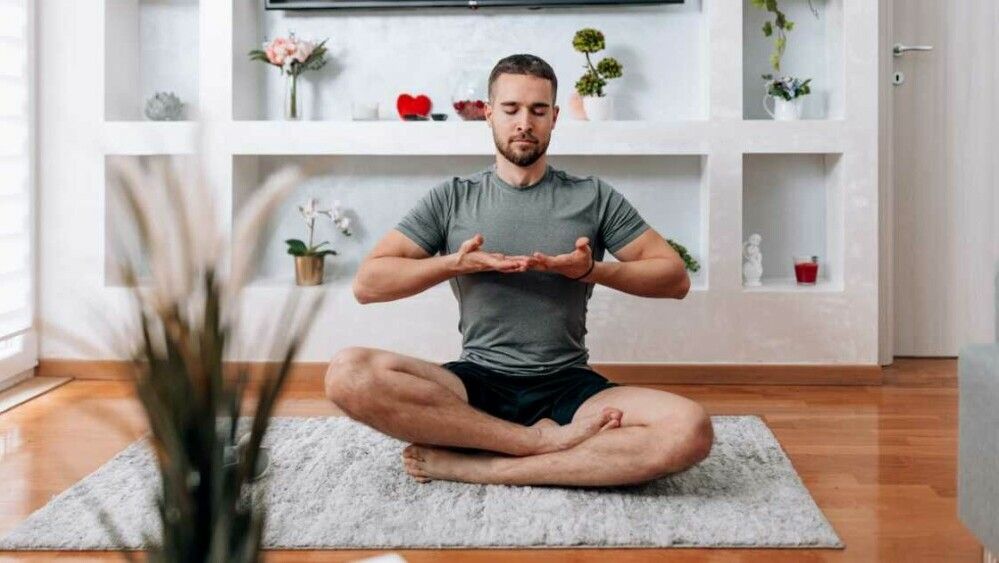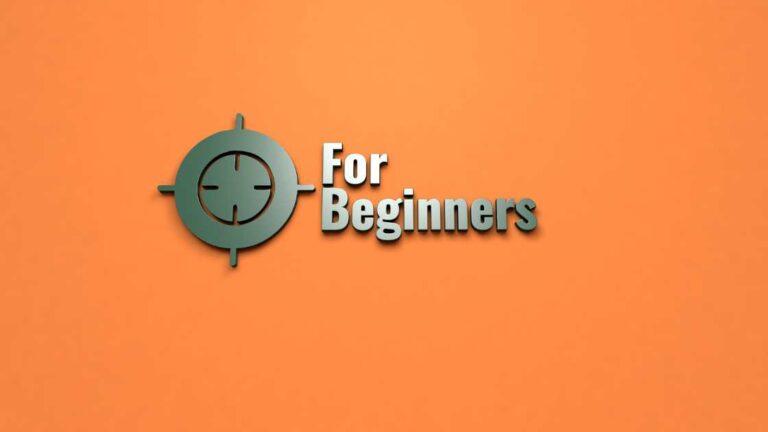Starting meditation is like finding a key to unlocking inner peace and understanding yourself better. But with so many techniques out there, it’s hard to know where to start. But don’t worry! In this article, I will show you the seven best meditation techniques for beginners. These techniques are like guiding lights that will help you begin your journey toward mindfulness and finding peace within yourself. So let’s get started with these simple and effective methods together.
1. Mindfulness Meditation
Mindfulness meditation is all about being fully present in the moment. It means paying close attention to our thoughts, feelings, and what’s happening around us without judging anything. This practice comes from ancient Buddhist teachings, but lots of people use it today because it’s great for our mental health.
Understanding Mindfulness
Mindfulness is about focusing on what’s happening right now without getting caught up in the past or future. When we meditate mindfully, we learn to watch our thoughts and feelings without getting carried away by them.
How to Practice Mindfulness Meditation
To start, find a quiet spot where you can sit comfortably without distractions. Sit with your back straight and your hands relaxed. Close your eyes or soften your gaze. Begin by paying attention to your breath, feeling each inhale and exhale.
Staying Focused
During meditation, your mind might wander. That’s okay! Whenever you notice this, gently bring your focus back to your breath or whatever you’re using as your anchor, like body sensations or sounds around you. With practice, you’ll get better at staying focused for longer.
Being Open & Kind
A big part of mindfulness is being open to whatever comes up without judging it. Instead of labeling things as good or bad, just notice them and let them pass. This attitude of acceptance helps us feel more peaceful and able to handle life’s challenges.
Why It Matters
Making mindfulness meditation a part of your daily routine can make a big difference in how you feel mentally, emotionally, and physically. It helps you become more aware of yourself, manage stress better, and be kinder to yourself and others.
2. Loving-Kindness Meditation (Metta)

Loving-Kindness Meditation, also called Metta meditation, is about spreading love and kindness to yourself and others. It comes from Buddhist teachings but is used widely today to help us be more caring and emotionally strong.
Understanding Loving-Kindness Meditation
This meditation is all about intentionally generating feelings of love, compassion, and empathy. Unlike some other meditations that focus on staying in the present, Metta meditation is about creating positive emotions towards ourselves and everyone else. It’s like sending out good wishes to break down walls between people and feel connected to everyone.
Growing Compassion & Kindness
In Loving-Kindness Meditation, the goal is to genuinely feel compassion and kindness towards ourselves and others. We recognize that everyone deserves love and happiness, and we understand that everyone goes through struggles. With practice, we learn to be kinder to ourselves and feel empathy for others’ joys and sorrows.
How to Practice Metta Meditation
To start, find a comfy, quiet place where you won’t be disturbed. Close your eyes and take a few deep breaths to relax. Begin by silently saying phrases like “May I be happy, may I be healthy, may I be safe, may I live with ease” to yourself. Repeat these phrases sincerely, letting feelings of love and compassion fill you up.
Spreading Love & Goodwill
Once you’ve shown yourself some love, you can extend it to others. Start with people you care about, then gradually include more people, even strangers. Imagine each person and genuinely wish them happiness, health, safety, and ease. With each repetition, feel your heart opening up and sending out love to everyone.
Why It Matters
Loving-Kindness Meditation is a powerful way to cultivate compassion and empathy in our lives. By practicing Metta meditation, beginners can learn to have open and loving hearts towards themselves and everyone else. Start making the world a more caring and connected place today with the transformative practice of Loving-Kindness Meditation.
3. Body Scan Meditation
Body Scan Meditation is a way to practice mindfulness by paying close attention to different parts of your body. It helps you notice sensations, areas of tension, and where you feel relaxed. This practice is great for helping you relax deeply, become more aware of your body, and let go of stress and tension.

What is Body Scan Meditation?
Body Scan Meditation is all about focusing on the present moment by slowly moving your attention through each part of your body. Unlike some other meditations that focus on breathing, this one helps you connect with your body and unwind.
How to Do a Body Scan
To start, lie down comfortably on your back, either on a yoga mat or a soft surface. Close your eyes and take a few deep breaths to relax. Begin by noticing how your breath feels in your body. Then, slowly move your attention from your toes up to the top of your head, paying attention to each part of your body as you go.
Benefits of Body Scan for Relaxation and Stress Relief
Body Scan Meditation is fantastic for helping you relax and reduce stress. As you scan through your body, you become aware of areas that feel tense, helping you release physical and mental strain. This leads to deep relaxation, calms your nerves, and brings a sense of inner peace. Regular practice can even help with stress, anxiety, and trouble sleeping, making you feel better overall.
Making Body Scan a Part of Your Routine
You can do Body Scan Meditation every day, either on its own or as part of your bedtime routine. Aim for at least 10-15 minutes in a quiet, comfy space. You can also combine it with other mindfulness practices like deep breathing or loving-kindness meditation for even more relaxation. As you get used to it, you might find it easy to do quick body scans during breaks in your day, helping you stay calm and focused.
Why It Matters
Body Scan Meditation is a great way to relax deeply, become more aware of your body, and relieve stress. By taking time to tune into your body’s sensations, you can find a sense of calm and well-being.

Find the Right Mindfulness Course for You!
Discover the 11 best mindfulness courses that can help you reduce stress, build resilience, and cultivate inner peace.
Find the perfect course for your needs. Read our guide and find the right one for you!
4. Mantra Meditation
Mantra Meditation is a way of meditating where you repeat a word, phrase, or sound over and over again. This repeated sound, called a mantra, helps you focus your mind and feel calm inside. It’s a practice that’s been used for a long time to help people quiet their thoughts and feel more peaceful.
Getting Started with Mantra Meditation
Mantra Meditation comes from ancient Hindu and Buddhist traditions. In this practice, the mantra you choose becomes like a special key that helps you unlock a sense of inner peace. By repeating the mantra, you can train your mind to let go of regular thoughts and feel more connected to something bigger.
Choosing Your Mantra
Picking the right mantra is important. While some people use traditional ones like “Om” or “So Hum,” you can also create your own based on what you want to focus on, like peace or love. Try out different mantras until you find one that feels right for you.
How to Meditate with Your Mantra
Once you have your mantra, find a quiet spot to sit comfortably. Close your eyes and take a few deep breaths to relax. Then, start repeating your mantra either out loud or in your head. Let the sound of the mantra fill your mind, pushing away any other thoughts. If your mind wanders, gently bring it back to the mantra.
Feeling Peace through Sound
Sound has a strong effect on how we feel. In Mantra Meditation, the repetitive sound of your mantra can help you feel more relaxed and peaceful. As you keep chanting or repeating it, you might notice a sense of calm spreading through you. With practice, Mantra Meditation can help you become more aware, clear-headed, and connected to yourself and the world around you.
Why It Matters
Mantra Meditation is a powerful way to find inner peace and grow spiritually. By making it part of your daily routine, you can start feeling more present, balanced, and content.
5. Breath Awareness Meditation
Breath Awareness Meditation is a basic practice where you focus on your breathing to become more mindful and calm. It’s a simple method that’s been used for a long time to help people relax and feel more aware of themselves.

Understanding Breath Awareness Meditation
In this meditation, you pay close attention to your breath as it goes in and out of your body. By doing this, you become more aware of the present moment and feel calmer. It’s about observing your breath without judging yourself, letting thoughts and feelings come and go naturally.
Using the Breath as a Guide
In Breath Awareness Meditation, your breath acts like a guide for your mind. You start by finding a comfortable place to sit, with your back straight. Close your eyes or look softly ahead, and focus on how your breath feels as you inhale and exhale.
Ways to Improve Breath Awareness
To deepen your meditation, you can try different techniques to help you focus better. One way is to count your breaths silently, up to a certain number, like ten, and then start over. Another way is to pay attention to how your body moves with each breath like your chest rising and falling. You can also practice mindfulness while doing everyday activities like walking or eating.
Benefits for Relaxation & Clarity
Breath Awareness Meditation is great for reducing stress and clearing your mind. By staying focused on your breath, you learn to let go of worrying thoughts and feel more relaxed. It can also help with anxiety, depression, and trouble sleeping while improving your ability to concentrate and manage your emotions. With regular practice, you’ll feel more resilient and at peace, even when facing challenges.
Why It Matters
Breath Awareness Meditation is a simple yet effective way to become more mindful and reduce stress. By making it part of your daily routine, you can become more self-aware, calm, and balanced, leading to a happier life.
6. Walking Meditation
Walking Meditation is a way of practicing mindfulness while you walk. It’s about paying attention to each step you take to feel more present and peaceful. Unlike sitting still for meditation, this practice lets you connect with your body and surroundings while moving gently.
Understanding Walking Meditation
Walking Meditation comes from Buddhist teachings and has been used for a long time to help people be more mindful and focused. Instead of sitting, you use walking as a way to meditate and be aware of your body, breath, and the world around you. You can do it indoors or outdoors, in a quiet space or surrounded by nature.
Moving with Awareness & Breath
In Walking Meditation, you coordinate your movements with your breath. Find a calm place to walk without distractions. Walk at your own pace, letting your arms swing naturally and breathing smoothly. Match your steps with your breath – breathe in as you lift a foot, and breathe out as you put it down. Notice how your body moves with each step, from your feet touching the ground to the way your muscles and joints work.
Staying Present while Walking
While you walk, focus on how your body feels, like the sensation of your feet on the ground, your muscles working, and the rhythm of your breath. Be fully in the moment with each step, letting go of thoughts about the past or future. If your mind starts to wander, gently bring it back to the feeling of walking.
Feeling Calm through Walking
Walking Meditation helps you find peace in your busy life. As you walk mindfully, you might notice your mind becoming calmer and clearer. This practice can help reduce stress, lift your mood, and make you feel better overall. Whether you do it alone or with others, Walking Meditation is a simple yet powerful way to be more mindful and connected to the present moment.
Why It Matters
Walking Meditation is an easy and effective way for beginners to practice mindfulness and feel more peaceful. By adding it to your daily routine, you can become more aware, present, and content, whether you’re walking or not.
7. Counting Meditation

Counting Meditation is a simple yet effective way to practice mindfulness. It involves counting breaths or other things to help you focus your mind and stay in the present moment. This technique is great for beginners because it gives them a clear method to calm their minds.
Understanding Counting Meditation
Counting Meditation is all about using numbers to keep your mind from wandering. By counting breaths or other things, you learn to pay attention to what’s happening right now. It’s an easy way for beginners to start meditating and develop skills for deeper meditation.
Different Ways to Count
There are many ways to do Counting Meditation. One way is to count each breath, starting from one and going up to a certain number, like ten. When trying counting meditation, you can experiment with various ways of counting to see what suits you best. Let’s break it down:
Counting Patterns: Instead of just going from one number to the next, you can try counting in different patterns. For example, you could count by twos (2, 4, 6, 8…) or threes (3, 6, 9, 12…). This can make it more interesting and challenging.
Counting Backward: Instead of starting from a small number and going up, you can start from a big number and count down. For instance, you could start from 100 and count backward to 1. Doing this might give your mind a different kind of focus and feel refreshing.
How to Practice Counting Meditation
Find a quiet spot where you can sit comfortably without distractions. Close your eyes and take a few deep breaths to relax. Choose a counting method that feels right for you. Start counting and try to focus on each count. If your mind starts to wander or you lose count, just start over without getting frustrated.
Adding Counting Meditation to Your Day
You can do Counting Meditation every day, even if it’s just for a few minutes. As you get better, you can increase the time you spend meditating. You can also do it during breaks at work or before bed to help you relax and stay focused. By making Counting Meditation a regular part of your day, you can become more mindful and peaceful.
Why It Matters
Counting Meditation is an easy way for beginners to practice mindfulness and focus their minds. By doing it regularly, you can become more aware of the present moment and feel calmer and more peaceful.
Final Thoughts
In conclusion, starting your meditation journey opens up many opportunities for personal growth, inner peace, and feeling better overall. We’ve talked about seven meditation techniques for beginners, and it’s important to remember that each one has its way of helping you be more mindful and present.
I encourage you to try out all the simple meditation techniques and see which one feels right for you. Once you’ve found the one you like best, try to practice it regularly as part of your daily routine. Remember, sticking with it and practicing regularly is important. With time and patience, meditation can make a big difference in your life.
If you need more help with your meditation journey, you can take a look at the meditation program linked below. I’ve reviewed it carefully, and it’s designed to make meditation easier for everyone, whether you’re a beginner or you’ve been meditating for a long time. This program gives you helpful tips, tools, and resources to improve your meditation and feel more peaceful and relaxed. With the right help and effort, meditation can change your life for the better, bringing you more happiness and satisfaction.


